Headlines and events archive
Displaying 151 - 200 of 354
You may also find an archive of news published in the media which are related with the Instituto de Astrofísica de Andalucía - CSIC.
Pages
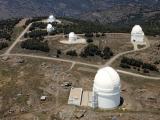
|
06/03/2020
A more sustainable observatory: Calar Alto will be converted into an “energy island” Calar Alto Observatory, scientifically co-managed by the IAA-CSIC, starts its energy transition thanks to a ERDF (European Regional Development Fund)-supported project. Using biomass and solar energy will considerably reduce the ecological footprint of the observatory, as well as the costs associated to its energy needs |
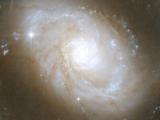
|
04/03/2020
MEGARA instrument enters the heart of the active galaxy NGC 7469 A study led by the IAA-CSIC has revealed the existence of two rotating gas discs in the vicinity of the galaxy's supermassive black hole, as well as a third component that points to turbulent movements |
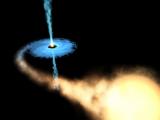
|
02/03/2020
Astronomers get the whole film of how a black hole ejects matter and interacts with the medium The black hole, which forms a binary system with a sun-like star, experienced an ejection of matter that transported gas over huge distances |
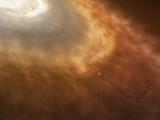
|
25/02/2020
A study reveals what the seeds of the solid bodies of the Solar System looked like: porous dust particles a few millimetres long The IAA is leading an investigation that shows, for the first time experimentally, the features of the particles of a comet's nucleus |
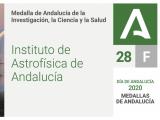
|
24/02/2020
The Institute of Astrophysics of Andalusia, Medal of Andalusia 2020 Awarded by the Junta de Andalucía, the IAA-CSIC obtains the Medal of Research, Science and Health |
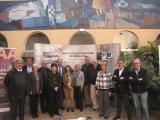
|
24/02/2020
The Institute of Astrophysics of Andalusia receives the visit of its External Scientific Advisory Board Appointed by the presidency of the Higher Council for Scientific Research (CSIC), the Board is made up of ten internationally renowned experts |
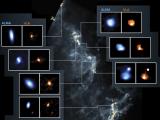
|
18/02/2020
More than three hundred planet-forming disks around young stars found in the Orion Clouds ALMA and VLA radiotelescopes enter the Orion Clouds, a stellar nursery that reveals how newborn stars evolve and develop protoplanetary discs. Researchers from the Institute of Astrophysics of Andalusia (IAA-CSIC) participate in the work, which constitutes the largest survey of this type performed to date |
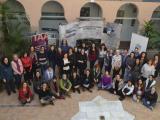
|
10/02/2020
International Day of Women and Girls in Science The Institute of Astrophysics of Andalusia joins the celebration of the International Day of Women and Girls in Science, which seeks to make visible the scientific work of women and promote vocations in girls |
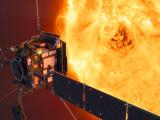
|
06/02/2020
Solar Orbiter mission takes off towards its orbit around the Sun The mission, which will observe the Sun from an unprecedented perspective, will study both solar physics and the influence of the Sun on the interplanetary environment. The Institute de Astrophysics of Andalusia (IAA-CSIC) co-leads SO/PHI, the largest of the ten instruments on board the mission |
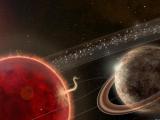
|
15/01/2020
Indications of the existence of a second planet around Proxima Centauri, the closest star to the Sun With a minimum mass of about six times that of the Earth, the planet would revolve around the star at 1.5 times the distance between the Earth and the Sun. This study adds to previous work that points to the existence of a complex planetary system around Proxima Centauri |
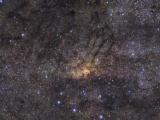
|
16/12/2019
IAA researchers discover an extremely violent episode in the history of the Milky Way, with over a hundred thousand supernova explosions A survey with an unprecedented resolution of the central regions of our galaxy reveals its full history of star formation, which presents steep ups and downs in star formation. There are indications of a burst of star formation so intense that it caused more than one hundred thousand supernova explosions |
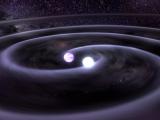
|
10/12/2019
Astronomers observe the approach of the stars of a binary system due to the emission of gravitational waves The system is composed of two white dwarf stars that revolve around the common centre of mass every twenty minutes, and which are gradually approaching. The work, in which the Institute of Astrophysics of Andalusia (IAA-CSIC) participates, shows that the stars have “flattened out” and have an ellipsoidal shape due to the tidal forces |
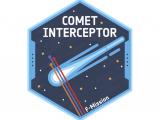
|
26/06/2019
The Institute of Astrophysics of Andalusia (IAA-CSIC) participates in Comet Interceptor, ESA's new mission to study a pristine comet IAA collaborates in the development of four of the nine instruments on board the mission |
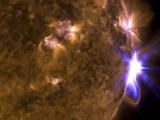
|
02/12/2019
Astronomers find a star that hides, among its pulsations, flares millions of times more intense than those of the Sun Observations with the Kepler satellite allow surface activity to be found in stars where, according to theoretical models, it should not occur. In the sample highlights the star KIC 9716385, which presents, hidden between its pulsations, flares millions of times more intense than the solar ones |
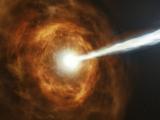
|
20/11/2019
Collapsing star breaks the records in very high energy photons production MAGIC telescopes, on the island of La Palma, detect photons in the range of teraelectronvolts in a gamma ray explosion (GRB), the product of the death of a very massive star. The detection, which requires contemplating new mechanisms in the energy production of GRBs, provides a fundamental perspective to complete our understanding of these events |
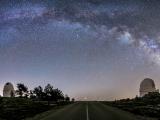
|
20/11/2019
Public Surveys and new instrumentation for Calar Alto Observatory Calar Alto Observatory opens a call for new instrumentation projects |
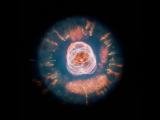
|
07/11/2019
An invisible companion could explain the strong X-ray emission of the Eskimo Nebula. An international group of astronomers led by the Instituto de Astrofísica de Andalucía finds a periodic variation in the X-ray emission of the central star of the Eskimo Nebula. |
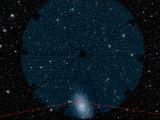
|
28/10/2019
Five thousand "eyes" to capture the colors of the cosmos The Dark Energy Spectroscopic Instrument (DESI) sees first light. DESI, a project with the participation of the IAA-CSIC, will improve the understanding of the role of dark energy in the history of the expansion of the universe |
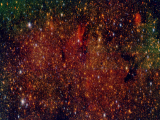
|
14/10/2019
The first results of the GALACTICNUCLEUS project, the most detailed star catalogue of the galactic centre, are published GALACTICNUCLEUS will allow to study the stellar population surrounding the super-massive black hole of the galactic centre with unprecedented detail |

|
06/10/2019
CARMENES finds an anomalous planetary system that challenges our understanding of how planets form CARMENES finds an anomalous planetary system that challenges our understanding of how planets form |
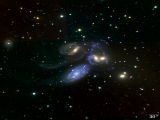
|
19/09/2019
Rediscovering the "Stephan's Quintet" Researchers from the IAA-CSIC has completed a detailed study of the so-called "Stephan's Quintet", a paradigmatic compact system of galaxies. |
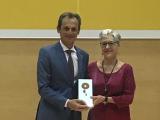
|
09/09/2019
The Institute of Astrophysics of Andalusia (IAA-CSIC) receives the distinction Center of Excellence Severo Ochoa The official delivery of these distinction to scientific excellence is celebrated in Madrid |
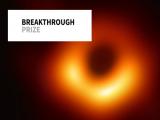
|
06/09/2019
IAA researchers, in the "Oscars of Science" The Breakthrough Prize in Fundamental Physics, endowed with three million dollars, has been awarded to the Event Horizon Telescope (EHT) international collaboration, which obtained the first image of a black hole. Two researchers from the Institute of Astrophysics of Andalusia (IAA-CSIC) participate in the collaboration, which brings together 347 researchers |
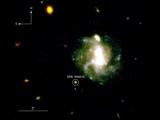
|
27/08/2019
A distant stellar collision with the shine of precious metals A signature similar to the gold and platinum producing explosion observed in light and gravitational waves in 2017 is found in the data of a 2016 gamma ray explosion. This confirms that heavy elements are produced in kilonovas, bursts that result from the fusion of very compact objects, such as neutron stars or black holes |
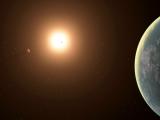
|
31/07/2019
Space and ground-based observations reveal a planetary trio around a nearby star Combining data from the TESS satellite and from various instruments on the ground, CARMENES among others, leads to the detection of a multiple planetary system around a nearby star. The work, which involves researchers from Instituto de Astrofísica de Andalucía (IAA-CSIC), opens the door to the detailed study of multiple planetary systems |
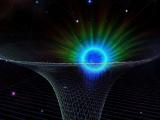
|
25/07/2019
The orbit of a star around the supermassive black hole of the Milky Way confirms the validity of Einstein's theory of relativity The star S2 draws an ellipse around Sagittarius A *, the black hole of the galactic nucleus, and its monitoring over twenty-six years has allowed studying the gravity in extreme environments. Researchers from the Institute of Astrophysics of Andalusia (IAA-CSIC) participate in the results, which are published in the journal Science |
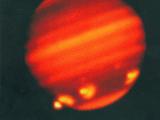
|
17/07/2019
25th anniversary of the impact of the comet Shoemaker-Levy 9 against Jupiter Between July 16 and 24, 1994, comet Shoemaker-Levy 9 hit Jupiter. Every observatory in the world was watching this unique event in history. |
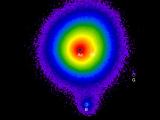
|
02/07/2019
Massive stars prefer high-order multiplicity over binarity MONOS project studies the binary or multiple systems formed by the most massive stars |
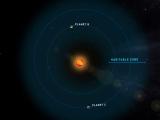
|
18/06/2019
CARMENES finds two temperate terrestrial planets around Teegarden´s star, a small nearby star CARMENES is a visible and infrared spectrograph that operates from the Calar Alto Observatory. Researchers from the Institute of Astrophysics of Andalusia (IAA-CSIC) participate in the research, which collected data from different astronomical facilities, including the Sierra Nevada Observatory (OSN) |
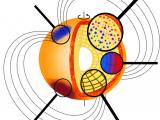
|
05/06/2019
TESS first light on stellar physics sheds light on roAp stars, the extreme pulsators TESS data has allowed to find five roAp, a type of rare stars that shows rapid pulsations, intense magnetic fields and a peculiar chemical composition |
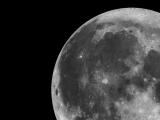
|
30/04/2019
The impact of a rock against the Moon during a total eclipse The study of the impacts on the lunar surface allows to adjust the predictions of impacts on our planet |
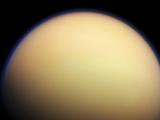
|
15/04/2019
Hurricane winds in Titan's high atmosphere Titan, one of Saturn's largest moons, is the only satellite in the Solar System with a complex atmosphere, resembling the primitive Earth. Very strong and confined winds have been detected in the high atmosphere of the satellite, where it seemed to be not enough energy to trigger such fast winds |
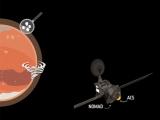
|
10/04/2019
First results from the ExoMars misión: absence of methane on Mars and variations in water vapor due to dust storms After a year in orbit around Mars, the TGO orbiter of the ExoMars mission (ESA-Roscosmos) reveals a surprising absence of methane and a relationship between dust storms and atmospheric water vapor. The results, published in Nature, were obtained with the ACS and NOMAD instruments. Researchers from the Institute of Astrophysics of Andalusia (IAA-CSIC) participate in the results, as well as in the scientific team that developed NOMAD |
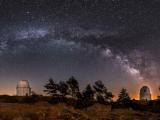
|
10/04/2019
The Governing Council of Junta de Andalucía authorizes its Administration to endorse the Hispano-German Astronomical Center (CAHA) El Consejo de Gobierno de la Junta de Andalucía autoriza a la Consejería de Economía, Conocimiento, Empresas y Universidad, en su sesión de 9 de abril de 2019, la adhesión de la Administración de la Junta de Andalucía a la Agrupación de Interés Económico del Observatorio Astronómico de Calar Alto (CAHA) en Almería. Esta decisión concluye con los requerimientos necesarios para poder efectuar la firma del correspondiente convenio |
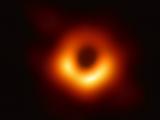
|
10/04/2019
Astronomers Capture First Image of a Black Hole Spanish astronomers from the Institute of Astrophysics of Andalusia (IAA-CSIC), the National Geographic Institute, the Millimeter Radioastronomy Institute and the University of Valencia have participated in this work. This international study assumes a paradigm shift in observations of the supermassive black hole located in the center of the Messier 87 galaxy |
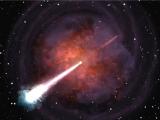
|
21/02/2019
A jet detected from the merging of two neutron stars The merging of the two stars, which occurred in August 2017, expelled a large amount of material that has been observed so far by radiotelescopes on five continents |

|
12/02/2019
First formal meeting between the Minister Pedro Duque and the alliance of Severo Ochoa centres and María de Maeztu units, SOMMa The Institute of Astrophysics of Andalusia (IAA-CSIC) obtainted in 2018 the distinction Center of Excellence Severo Ochoa |
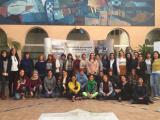
|
07/02/2019
International Day of Women and Girls in Science The Institute of Astrophysics of Andalusia joins the celebration of the International Day of Women and Girls in Science, which seeks to make visible the scientific work of women and promote vocations in girls |
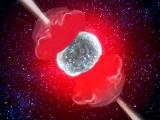
|
16/01/2019
Observations of a rare hypernova complete the picture of the death of the most massive stars A work, lead by the Institute of Astrophysics of Andalusia (IAA-CSIC) and published in Nature, studies in detail the death of a massive star that produced a gamma-ray burst (GRB) and a hypernova |
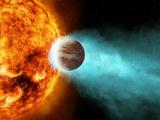
|
06/12/2018
The "planet-hunter" CARMENES studies evaporating atmospheres and water vapor beyond the Solar System Three studies with the infrared channel of the CARMENES instrument, developed at the Institute of Astrophysics of Andalusia (IAA-CSIC), are published in the journals "Science" and "Astronomy & Astrophysics". CARMENES opens a door to the study from the ground of the composition of exoplanetary atmospheres, their escape processes and their clouds and aerosols |
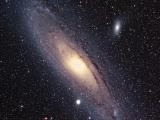
|
27/11/2018
A new instrument for studying galaxies in the local universe from Calar Alto LUCA is proposed as a new generation instrument for the 3.5 meter telescope of the Calar Alto Observatory (Almería, CAHA). The project, conceived in the Institute of Astrophysics of Andalusia (IAA-CSIC), has been selected by the advisory committee of the observatory for the funding of the feasibility study, which is managed by the University of Almeria (UAL) |

|
20/11/2018
ESCAPE: Open Science and new paths in the knowledge of the cosmos at all scales ESCAPE project encompasses some of the world's largest scientific infrastructures in astronomy and particle physics, for the development of a single digital platform for the open use of data. Funded with sixteen million euros by the European Union through the Horizon 2020 program, it represents a unique effort towards Open Science. The Institute of Astrophysics of Andalusia (IAA-CSIC) participates in the project, for its key role in the... |
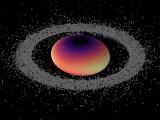
|
19/11/2018
The complex dynamics of the miniature ring systems of the Solar System The finding of rings around Solar System bodies that are not planets, such as the dwarf planet Haumea or the centaur Chariklo, showed that these are more common structures than previously thought. A work, in which the Institute of Astrophysics of Andalusia (IAA-CSIC) participates, analyzes the complex dynamics of these miniature rings |
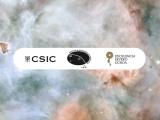
|
16/11/2018
The Institute of Astrophysics of Andalusia (IAA-CSIC) obtains the distinction Center of Excellence Severo Ochoa The objective of the program is to finance and accredit research centers that demonstrate international impact and leadership |
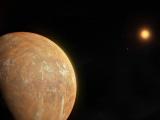
|
14/11/2018
Super-Earth discovered around the second nearest stellar system An international team of researchers, with the participation of the Institute of Astrophysics of Andalusia (IAA-CSIC) finds an exoplanet with three times the mass of the Earth. The exoplanet orbits the red dwarf Barnard, the closest star to the Sun after the Alpha Centauri system. The team has used observations taken in 18 years combined with the CARMENES planet-hunter spectrograph at Calar Alto Observatory (CAHA) |

|
31/10/2018
The researcher Mirjana Povic receives the Nature Research for Inspiring Science Award Researcher at the Ethiopian Space Sciences and Technology Institute (ESSTI) and associated doctor at the Institute of Astrophysics of Andalusia, she investigates the formation and evolution of galaxies. She works in the development of science and education in Africa, with special attention to the role of women, and has coordinated and participated in projects in Ethiopia, Uganda, Rwanda, Tanzania, South Africa, Kenya and Ghana |
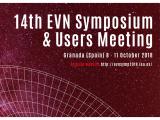
|
07/10/2018
Researchers from around the world debate in Granada the latest advances in the observation of the universe in radio The European VLBI Network (EVN), a network of radio telescopes distributed throughout Europe and Asia, with additional antennas in South Africa and Puerto Rico, holds its fourteenth symposium in Granada. Over one hundred and thirty researchers and technologists from around the world will discuss the latest scientific results and technological developments in the field of radio observation |
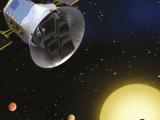
|
20/09/2018
CARMENES instrument gets the first exoplanet detection alerts from TESS (MIT-NASA) mission It is expected that the TESS mission, developed at the Massachusetts Institute of Technology (MIT) and NASA, finds about one thousand five hundred planets around other stars in its two years of operation. CARMENES spectrograph team, located at the Calar Alto Observatory, has begun to receive the alerts in order to confirm and analyze TESS detections |
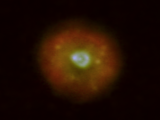
|
06/08/2018
The strange case of HuBi1, an inside-out stellar corpse The physical structure of a planetary nebula resulting from the final evolution of a solar-like star is contrary to that of all other similar sources. A research led by IAA-CSIC concludes it resulted from a born-again event of its central star |
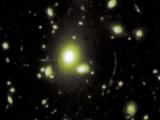
|
10/07/2018
An extraordinarily dense region tests the theory of structure formation in the universe A halo of dark matter six times denser than expected has been found around a cluster of galaxies. This finding shows that there must be very effective mechanisms, not considered until now, for the accumulation of matter around the great structures that populate the universe |